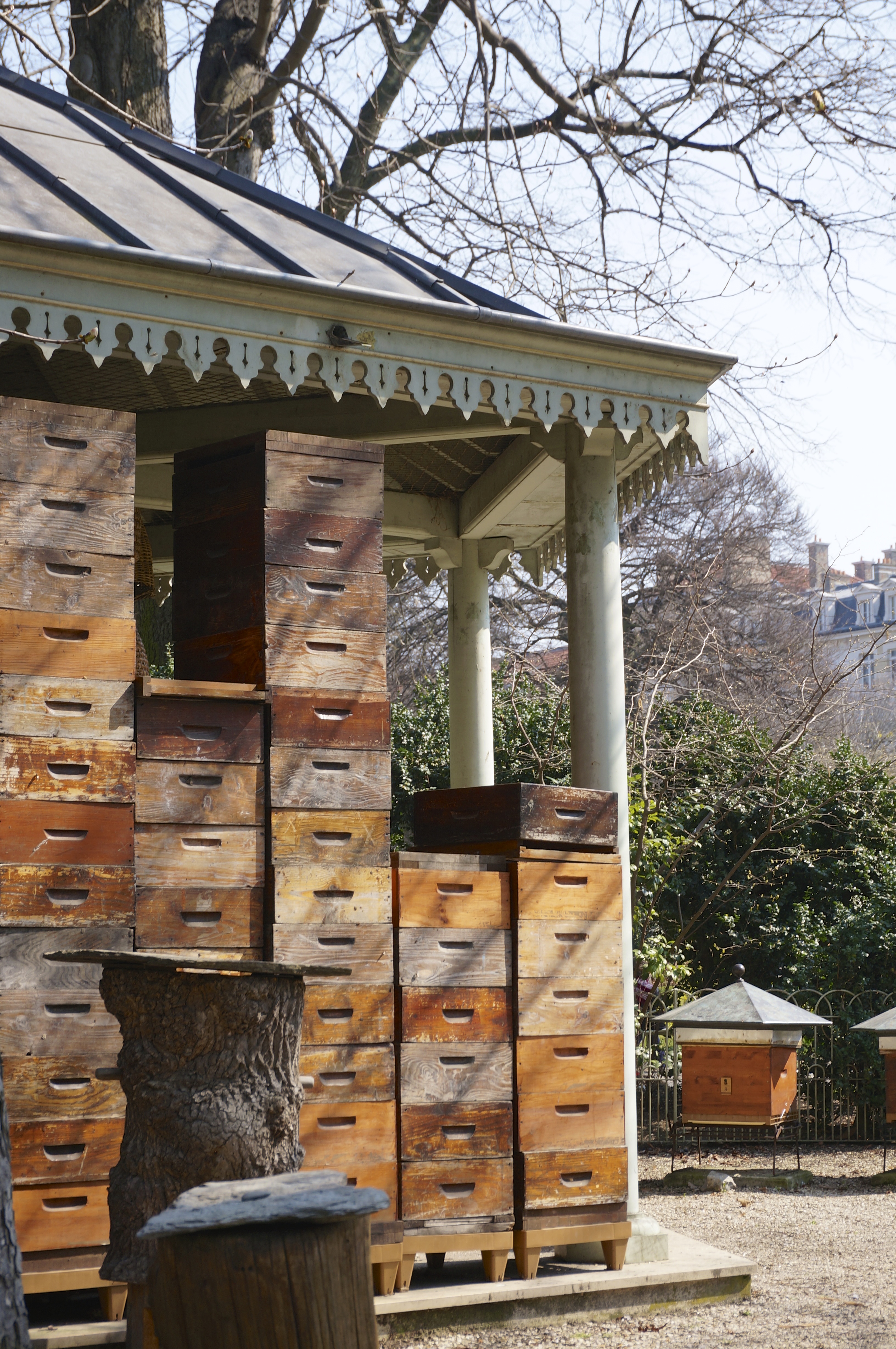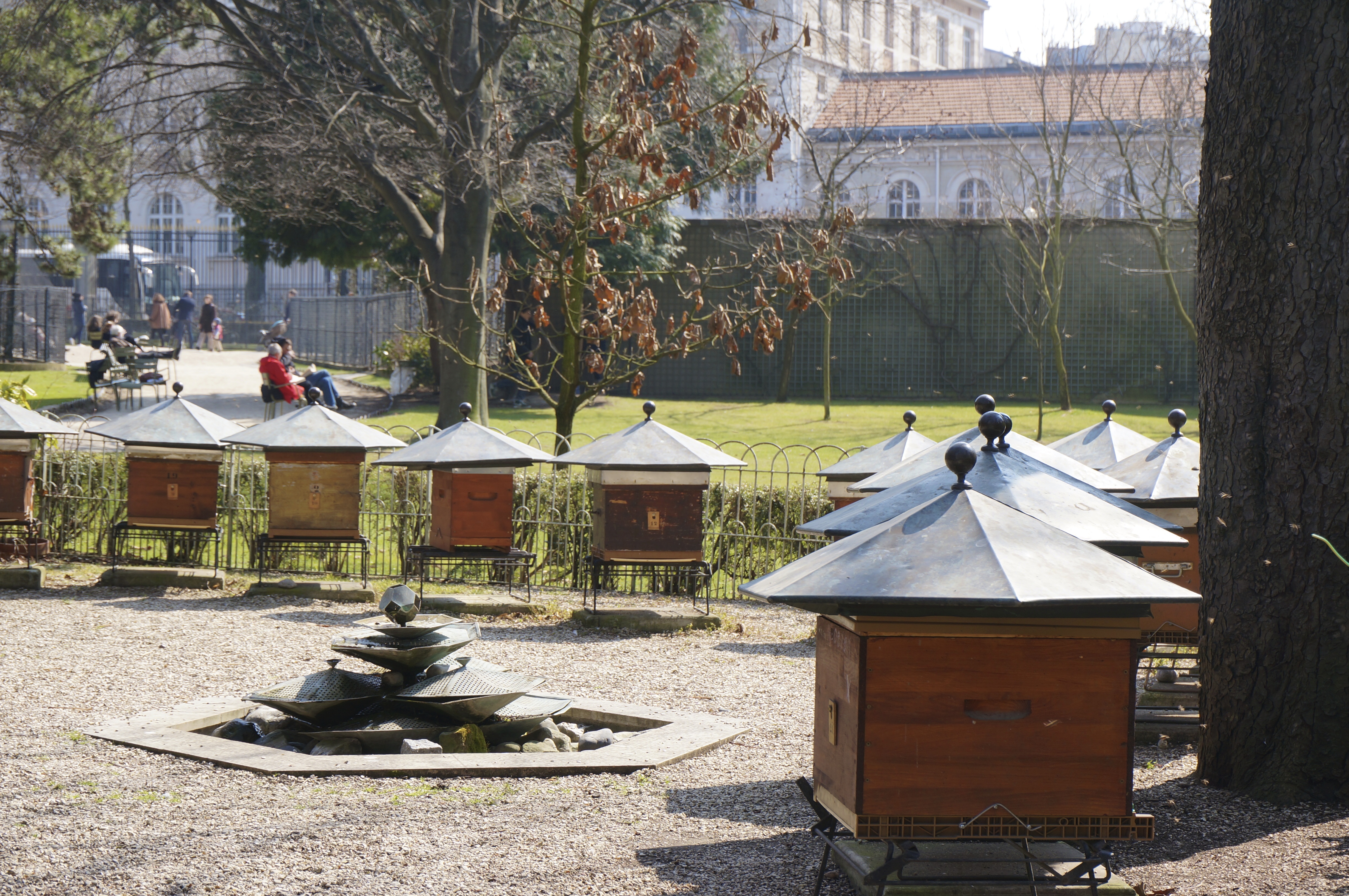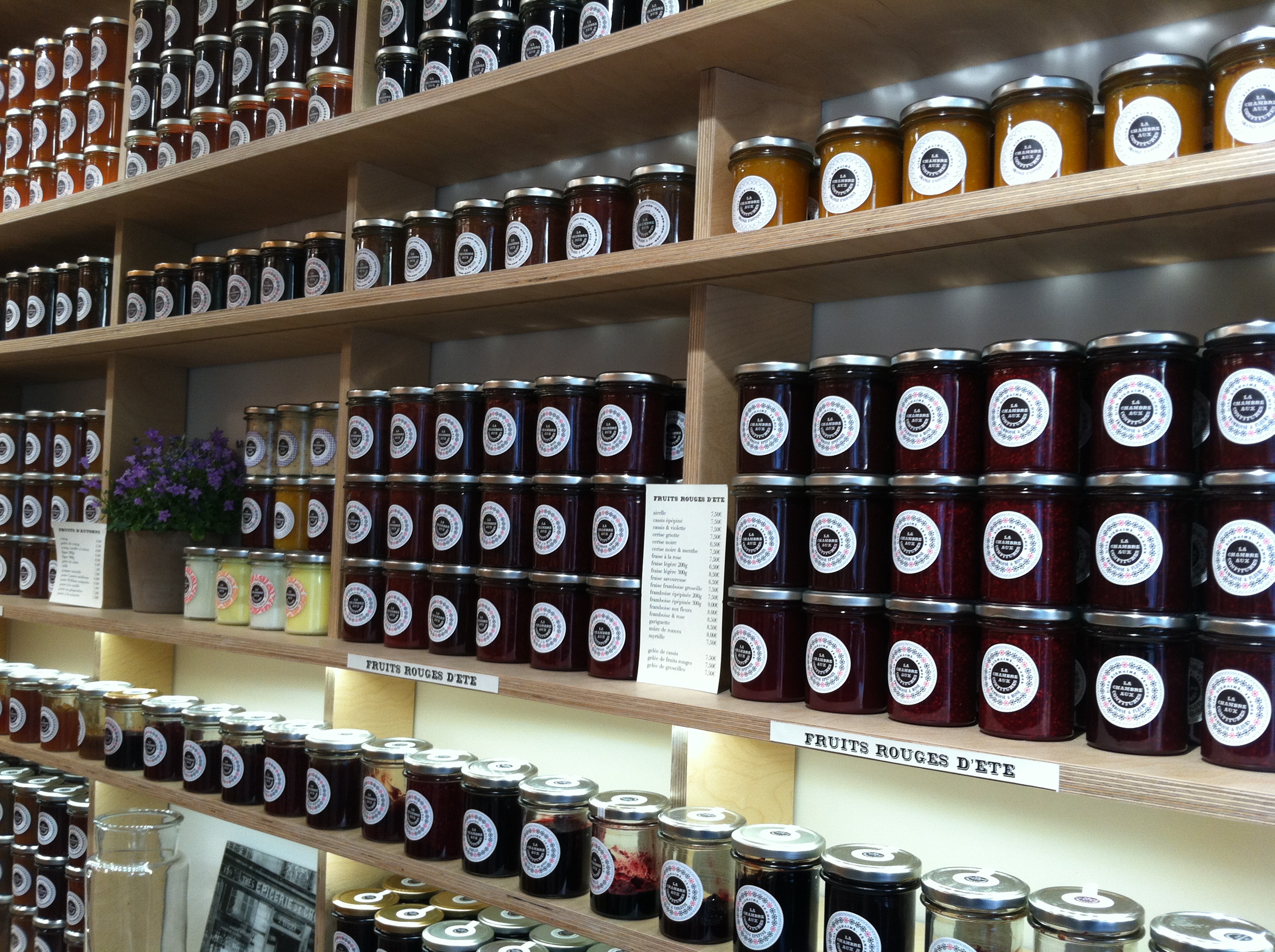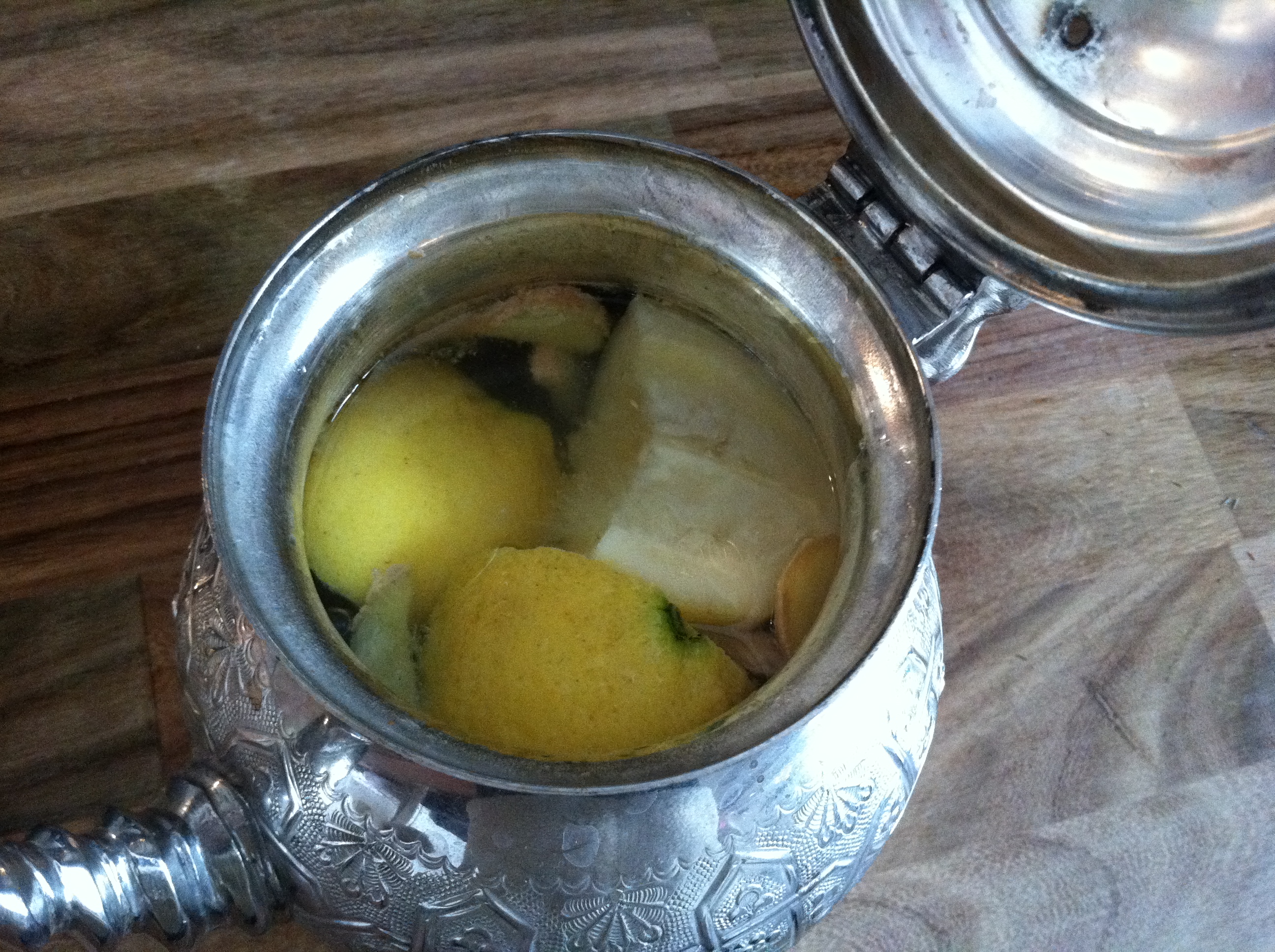
Honey has popped up a few times since we’ve been in Paris and provided the perfect reminder of it’s potent healing properties. Honey first appeared when we were walking through the Luxembourg Gardens. Amazingly they have a working hive in the garden filled with the cutest little huts for the bees. I am impressed by this commitment to actually working the land in the park instead of having it all purely for recreation. It makes perfect sense — the park is filled with flowers and trees that need bees for pollinating and in turn provide a terrific food source for honey production. It is an terrific, sustainable model that we should think about replicating elsewhere — especially as we face declining bee populations.

My second honey, or miel as it’s called in French, interaction came when we stumbled upon La Chambre Aux Confitures. This store was wonderful! It was filled from floor to ceiling with hundreds of jars of honey, jam, and preserves. I could have stayed for hours tasting the different varieties and learning about their preservation techniques, but for some strange reason T was finished after about 15 minutes. This store reminded me of Follow the Honey in Cambridge, MA that opened about two years ago to serve the growing market for gourmet, artisnal honey in the US.

I really support this movement because I honestly don’t think you can even compare industrial, pasteurized honey from the supermarket with pure, raw honey. Raw honey hasn’t been treated with heat or light, which preserves its active medicinal components. Plus there is no reason to buy pasteurized honey becuase honey never goes bad. It may start to crystallize after a while, but just heat it slowly to bring it back to it’s original consistency.
Raw honey contains a number of vitamins, minerals, and antioxidants — C, B1, B2, B3, B5, B6, calcium, iron, magnesium, sodium, phosphorus, sulphur, and potassium. The amount of vitamins, minerals, and antioxidants will change according to the quality of the nectar and pollen that the honey is made from. Darker honey typically has higher levels.
Honey has a long history as a natural medicine. Here are a few of my favorite uses:
Antibacterial – honey is excellent for general antibacterial use both internally and externally. It contains the enzyme glucose oxidase, which causes glucose to oxidate and produce hydrogen peroxide (a powerful antiseptic). Honey also has an acidic pH that makes it inhospitable for bacteria growth. Finally, it creates an osmotic effect when applied topically, which draws out infection and/or poison from bites, stings, and wounds.
Anti-inflammatory – honey helps reduce inflammation within the body. It sooths irritated tissues and promotes new growth. While the effects can be felt throughout the body, I’ve seen them work best in the respiratory system and the digestive system. Honey is working on two levels in both areas — reducing the tissue inflammation (i.e. sore throat) and fighting the bacteria that is causing the illness in the first place. Honey has been studied clinically for its anti-inflammatory properties in cough suppression and was proven more effective than certain cough syrups. This is a particularly good remedy for kids given the sweet taste.
Wound Healing – in addition to fighting bacteria to speed wound healing, honey can also be used to avoid scarring. It creates a moist healing environment that allows skin cells to regrow naturally, which can help avoid or lessen scars. This is true for all wounds, but especially for burns.
I used honey a few days ago when I had a sore throat. I combined it with lemon (immune-boost of vitamin C) and sliced ginger (anti-inflammatory) in the tea pot below. It was very tasty, soothed my throat, and helped me fight off the cold.

And let’s not forget that honey is delicious in addition to medicinal! We’ve been enjoying is drizzled over our morning yogurt, berries, and granola.

Please remember that honey is a sweetener so it should be used in moderation. But, if you need something sweet for a recipe etc. honey is a great option because of all the nutrition and healing properties it provides. Enjoy!
Leave a Reply